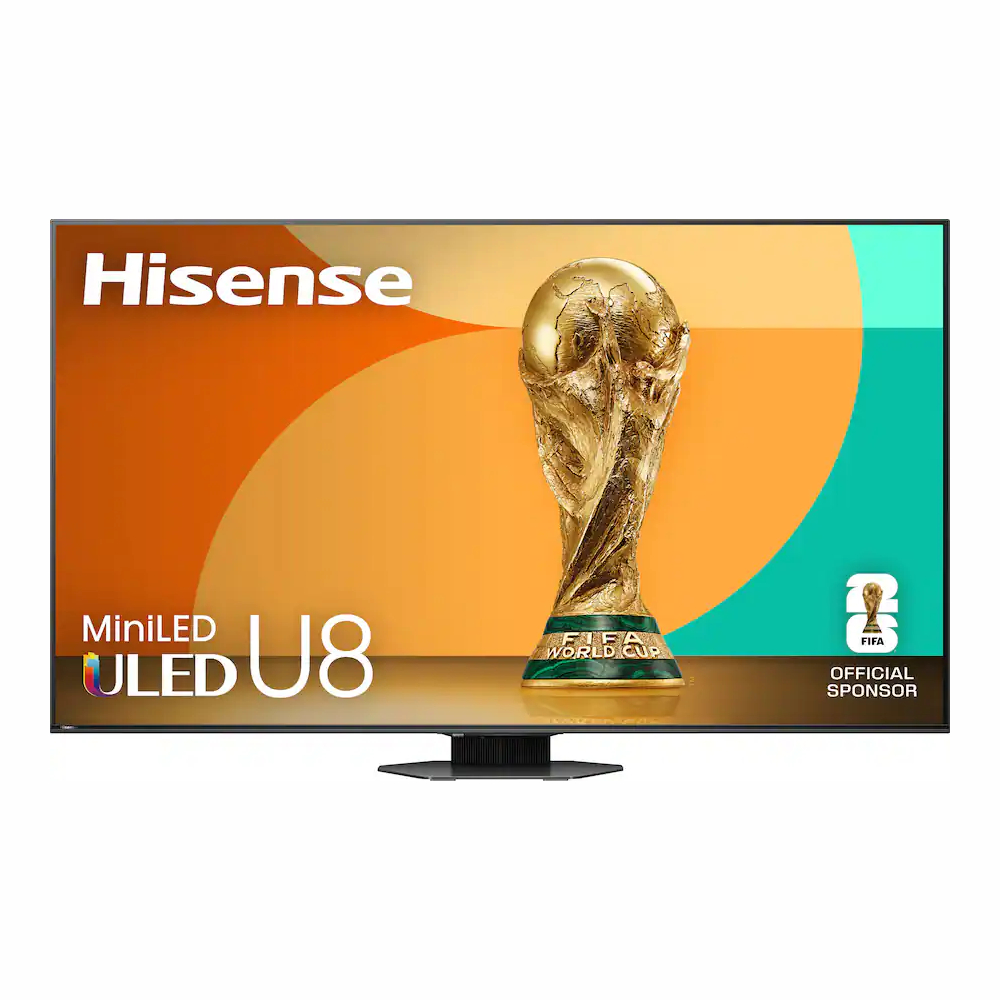Hisense U75QG vs Hisense U8QG: Which Mini-LED TV is the better deal?
A refreshingly simple matchup between two super-similar TVs
It’s easy to get confused when comparing two TVs — especially when they’re similarly named models belonging to the same brand. Take the Hisense U75QG and the Hisense U8QG. Both of these 2025 sets tap the same type of display technology and come with many of the same features. Heck, even their names sound the same.
But when push comes to shove, you’ve got to make a choice. The U75QG is the more affordable of the two, but for some folks, the U8QG is worth the added cost. As Senior TV Editor, I’m deeply familiar with both. Let’s compare and contrast.
Hisense U75QG vs Hisense U8QG: Specs compared
| Header Cell - Column 0 | Hisense U75QG | Hisense U8QG |
|---|---|---|
Sizes | 55", 65", 75", 85", 100" | 55", 65", 75", 85", 100" |
Ports | 4x HDMI 2.1 | 3x HDMI 2.1, 1x USB-C |
Resolution | 3,840 x 2,160p | 3,840 x 2,160p |
Refresh rate | 165Hz | 165Hz |
HDR | Dolby Vision, HDR10+, HDR10, HLG | Dolby Vision, HDR10+, HDR10, HLG |
Smart TV software | Google TV | Google TV |
ATSC 3.0 support? | Yes | Yes |
Processor | Hi-View AI Engine Pro | Hi-View AI Engine Pro |
The U75QG and U8QG hit shelves in the same selection of sizes. Both sets support the same HDR formats. Their native refresh rate is the same, too — up to 120Hz during 4K gaming on consoles or up to 4K/165Hz when linked up to a gaming PC. I'll touch more on their smart features later, but it's worth highlighting that both TVs come with Google TV as their built-in smart platform.
Hisense U75QG vs Hisense U8QG: Design

The first difference you’d notice in a side-by-side comparison would likely be their individually styled stands. The U75QG — pictured above — makes use of a flat, plate-like base that attaches to the panel via a pair of points along the base’s back corners.
The U8QG also uses a flat base for a stand, but it connects to the TV with a pedestal-style connective piece. This design might introduce more wobble at larger sizes, but both are relatively sturdy. Similar, too, are the Hisense remotes that ship with these sets. In fact, these slim, conveniently backlit clickers are identical.

There are two significant design differences between the U75QG and the U8QG: the former is bulkier than its higher-end counterpart, while the latter arrives with one fewer HDMI input.
Both TVs deliver HDMI 2.1 compatibility across all of their inputs (much to the delight of gamers everywhere), but the U8QG’s would-be fourth input is replaced by a USB-C port — convenient for a small subset of viewers, I imagine, but something to keep in mind if you have more than two consoles.
Get instant access to breaking news, the hottest reviews, great deals and helpful tips.
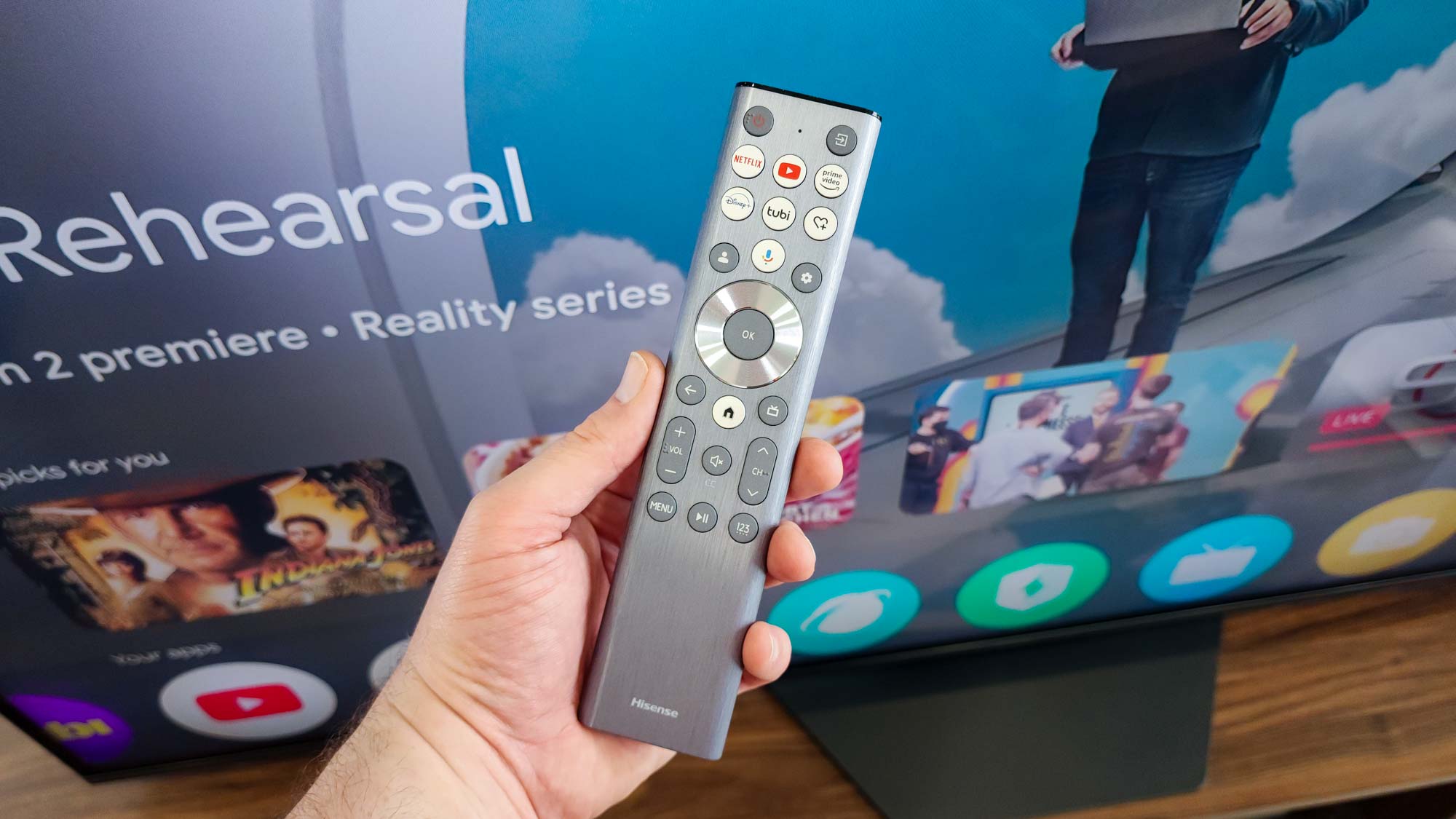
And when I say that the U75QG is bulkier, I mean just that. Its panel is thicker and bulges out about a third of the way down, while the U8QG features a slimmer, sleeker-looking profile.
From an aesthetic standpoint, I prefer the U8QG. But I do think a significant amount of people might be turned off by the U8QG’s limited number of HDMI inputs. So this category is a toss-up.
Winner: Tie
Hisense U75QG vs Hisense U8QG: performance
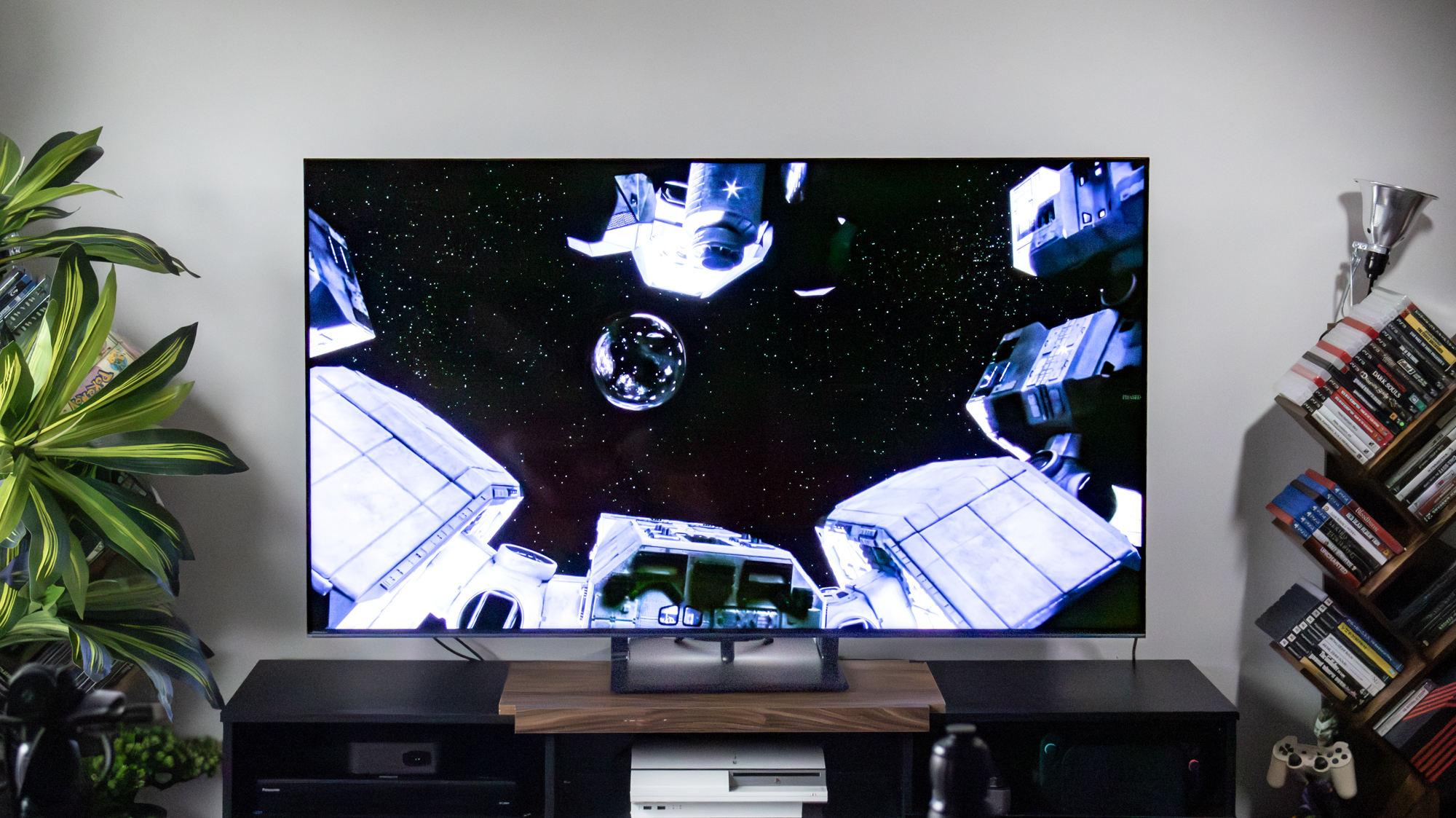
Before we dive into which of these Mini-LED TVs is the better performer, let's compare their test results.
| Header Cell - Column 0 | Hisense U75QG | Hisense U8QG |
|---|---|---|
SDR Brightness (10%, in nits) | 2,220 | 2,908 |
Delta-E (lower is better) | 2.8 | 2.4 |
HDR Brightness (10%, in nits) | 3,338 | 3,916 |
UHDA-P3 Gamut Coverage | 94.9% | 97.53% |
Rec. 2020 Gamut Coverage | 76.19% | 83.98% |
Input latency (milliseconds) | 9.8 | 9.7 |
One thing jumps out at us right away: peak brightness. Both of these sets leverage Mini-LED backlighting for added contrast control and quantum dots for bolder, purer color, but the U8QG is substantially brighter than the U75QG.
I ought to note, though, that the U75QG definitely isn’t a slouch in this department. Just a few years ago, this level of brightness would be unheard of within the U75QG’s mid-range class. These days, even if you settle for Hisense’s more-affordable model, you’re still getting a TV that can hold up in the sunniest of rooms. (Just make sure you’re not putting it opposite a window.)
Due to how our eyes perceive contrast, in a side-by-side comparison, I suspect that most people would clock the U8QG’s added brightness across the whole picture rather than within smaller, concentrated highlights.
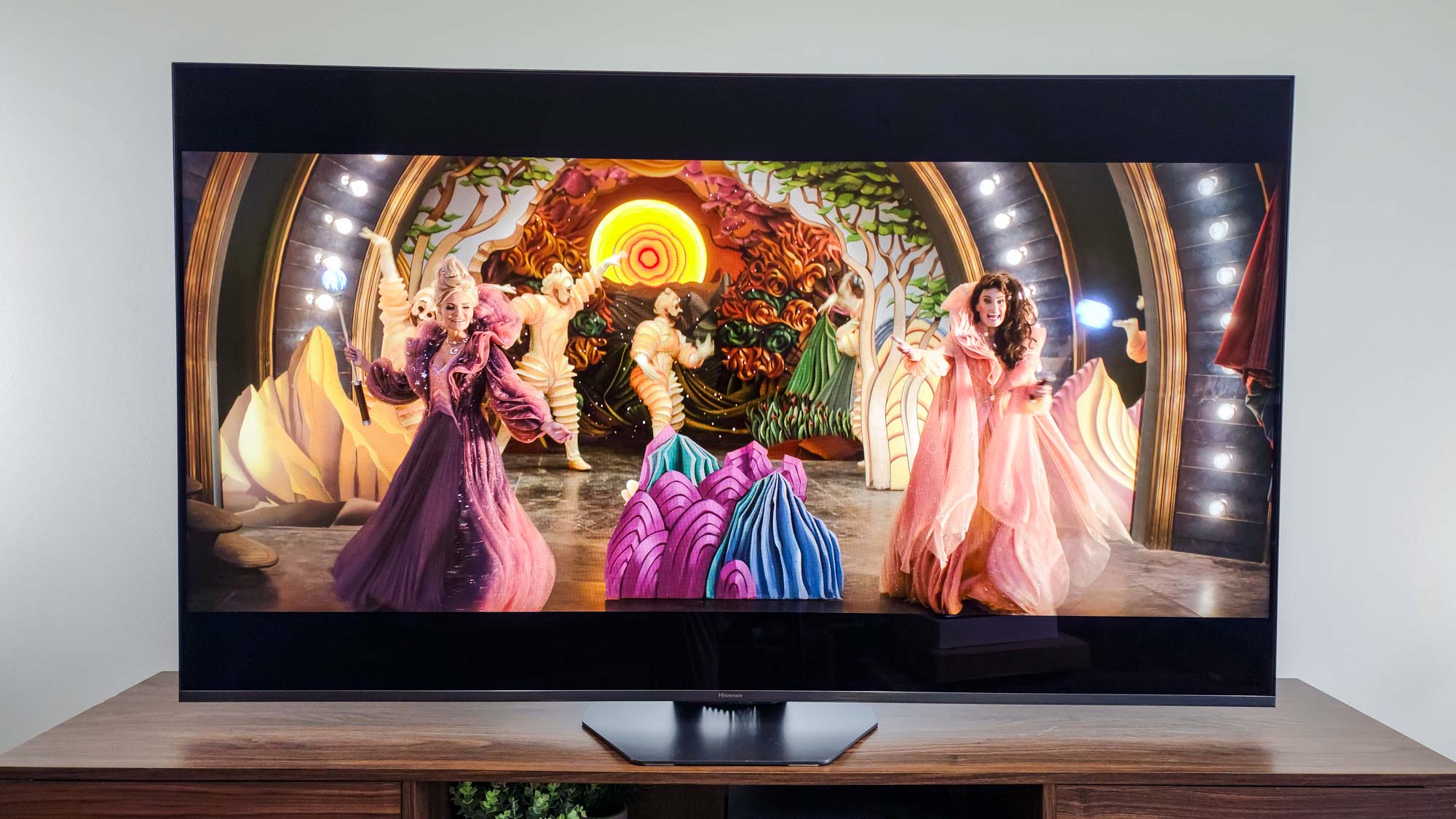
The U8QG offers a brighter, more-colorful picture with better backlight control.
I also suspect that, with the understanding that some amount of blooming is to be expected, most viewers would prefer the U8QG’s cleaner presentation. Across the series, the U8QG features more dimming zones than the U75QG, and the added backlight control goes a long way.
And, not for nothing, but the U8QG’s added brightness is the primary reason that its color volume is significantly better than what the U75QG is cooking with. The punchier palette allows for a prettier picture during HDR movies and games.
To sum up: The U75QG is a terrific mid-range Mini-LED TV that punches way above its weight, but the U8QG offers a brighter, more-colorful picture with better backlight control, and you’re more likely to notice these differences while watching newer content or playing video games in HDR. These advantages represent roughly 95% of the U8QG’s added price.
Winner: Hisense U8QG
Hisense U75QG vs Hisense U8QG: Smart platform and features

Both of these TVs deliver near-identical experiences when you turn them on and start using them. They’re built around the Google TV streaming platform, which is good news if you don’t like to get lost on your way from the home screen to the settings menu. It’s an easy-to-navigate, mostly stress-free way of leveraging a smart TV’s many features.
Would I like fewer ads and recommendations for trashy TV shows that I’ll never watch? Absolutely. But there are worse software suites out there.
You’re getting the same selection of HDR formats regardless of which TV you buy, and that’s great, because both models support Dolby Vision and HDR10+. These are the two most popular enhanced HDR formats on the market, so you’re good to go no matter what Hollywood throws at you.
Their gaming features cover the same ground, too, and that coverage is thorough. The basics are here (ALLM and VRR), but U75QG and U8QG owners also enjoy AMD FreeSync Premium Pro support and the aforementioned ability to showcase 4K games at 165Hz with the proper PC. If you’re a power user with a ton of devices, bear in mind that the U75QG has an odd little advantage in its added HDMI 2.1 port.
Hisense U75QG vs Hisense U8QG: Verdict
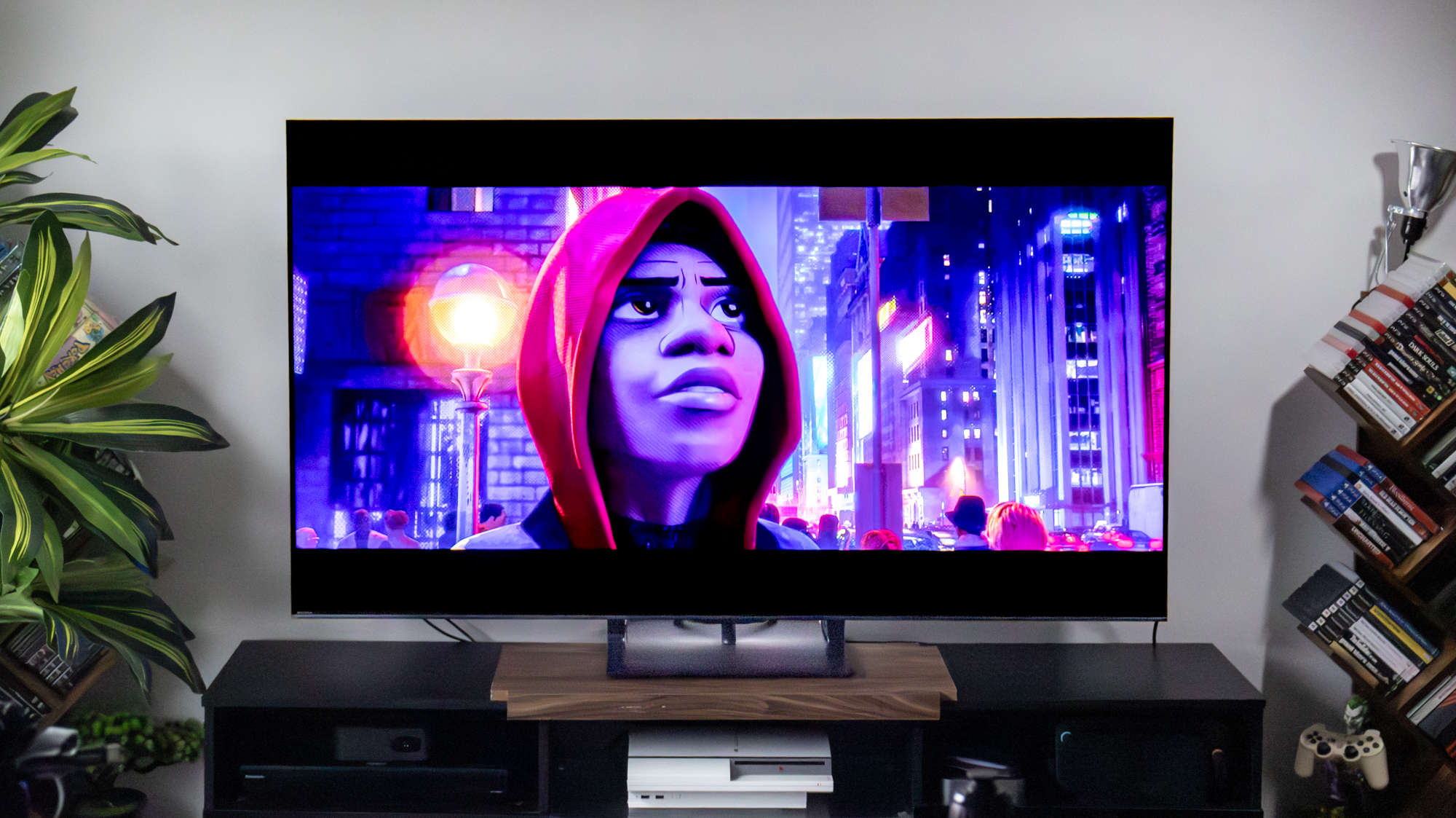
| Header Cell - Column 0 | Hisense U75QG | Hisense U8QG |
|---|---|---|
Specs (25) | 23 | 23 |
Design (25) | 20 | 22 |
Performance (25) | 21 | 23 |
Features (25) | 23 | 23 |
Total Score (100) | 87 | 91 |
The U8QG offers better performance, a slimmer design and a USB-C port. The U75QG is more affordable and comes with a fourth HDMI 2.1 input. That’s it in a nutshell.
Given its friendlier price and its performance gains year over year, I consider the U75QG to be the better value proposition by a lot. And, since I find its fourth HDMI 2.1 input far more useful than the U8QG’s USB-C port, the U75QG can’t help but be my favorite of the two.
But I wouldn’t blame anyone for preferring the better-performing TV over the better-value pick. The U8QG offers an all-around better presentation, and if its limited spread of HDMI ports isn’t an issue for you, consider whether the picture quality is worth the added price. Right now, the 65-inch Hisense U8QG is $1,079 at Amazon. The 65-inch Hisense U75QG is just $897 at Amazon. At a little less than $200, the U8QG’s advantages might be within your budget.

Follow Tom's Guide on Google News and add us as a preferred source to get our up-to-date news, analysis, and reviews in your feeds.
More from Tom's Guide

Michael Desjardin is a Senior Editor for TVs at Tom's Guide. He's been testing and tinkering with TVs professionally for over a decade, previously for Reviewed and USA Today. Michael graduated from Emerson College where he studied media production and screenwriting. He loves cooking, zoning out to ambient music, and getting way too invested in the Red Sox. He considers himself living proof that TV doesn't necessarily rot your brain.
You must confirm your public display name before commenting
Please logout and then login again, you will then be prompted to enter your display name.

